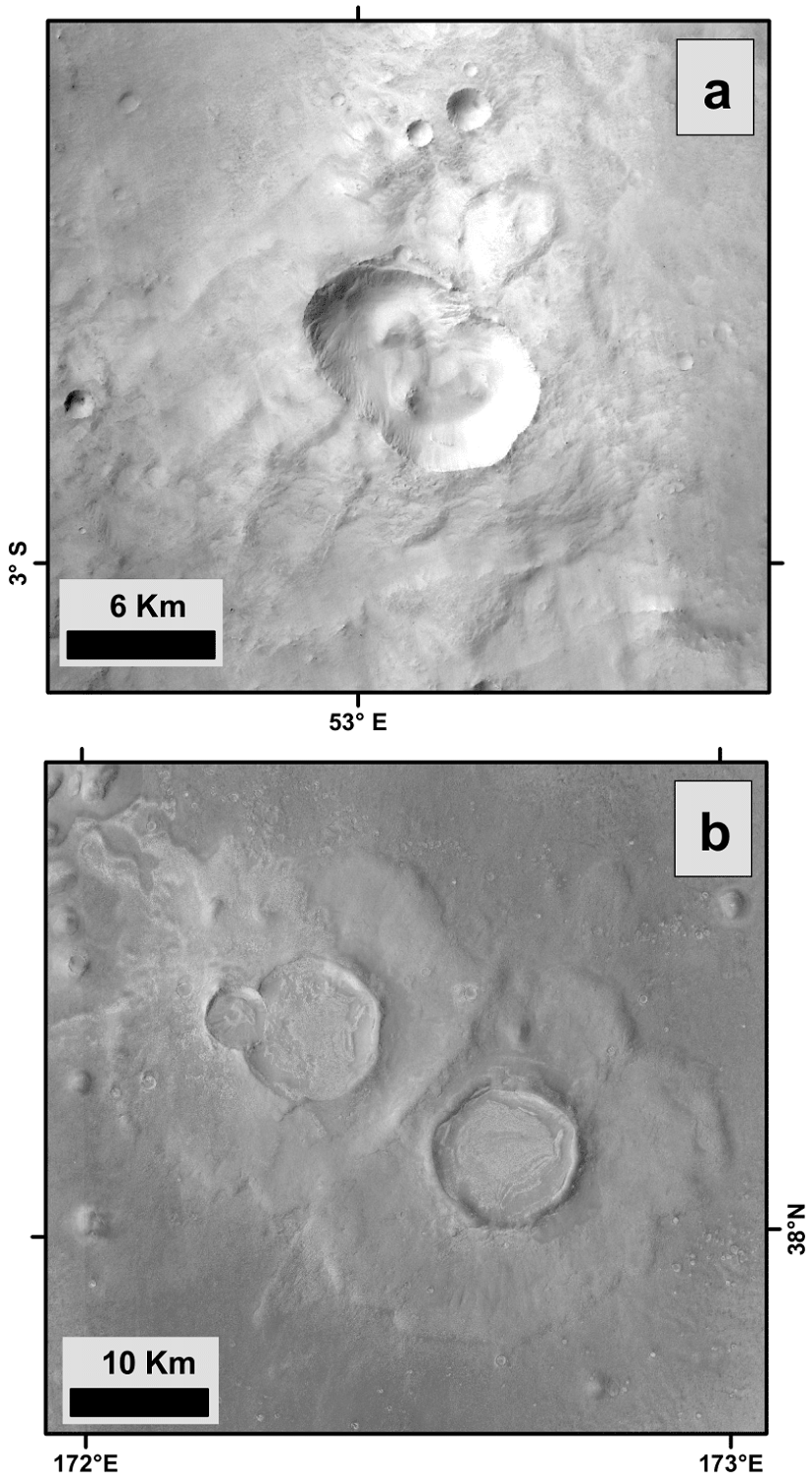Unknown population of binary asteroids
- 1Universite Cote d’Azur, Observatoire de la Cote d’Azur, CNRS, Laboratoire Lagrange, Nice, France (dmitrii.vavilov@oca.eu; benoit.carry@oca.eu)
- 2Space Science and Technology Centre, School of Earth and Planetary Sciences, Curtin University, Perth, WA, Australia (anthony.lagain@gmail.com; hadriendvpx@gmail.com)
- 3CNRS, UMR 6112 Laboratoire de Planetologie et Geodynamique, Universite de Nantes, Nantes, France (anthony.guimpier@univ-nantes.fr; susan.conway@univ-nantes.fr)
- 4GEOPS-Geosciences Paris Sud, Universite Paris-Sud, CNRS, Universite Paris-Saclay, 91405, Orsay, France (sylvain.bouley@gmail.com)
Introduction
Planetary surfaces not protected by dense atmospheres suffered by many impacts by asteroids and comets, leaving craters as a reminders of it. Among all craters observed on surfaces of Earth, Mars, Moon, and Venus, about 3-4% are binary craters. It is believed they formed by the simultaneous impacts of the two components of binary asteroid systems.
Binary asteroids represent 15% of near-Earth asteroids, apparently at odd with the rate of binary craters on planetary surfaces. Miljkovic et al. showed with 3-D hydrocode simulations that only a fraction of impacts by binary asteroids create distinguishable binary craters, solving the apparent discrepancy with the fraction of binary craters of 3-4%. However, the few binary crater examples in have striking properties: nearly similar size and North-South orientation, unexpected from a population of binary asteroids displaying a typical size ratio of 0.3 and with a mutual orbit closely aligned with the ecliptic.
Survey and simulations
A large fraction of impact craters on Mars exhibits thick and continuous ejecta blanket emplaced in a pyroclastic flow-like regime due to the presence of volatile material at the moment of the impact. This facilitates the recognition of synchronous impact events, making the surface of Mars an ideal case to survey for the existence of binary craters and infer the binary asteroids properties.
Our study focuses on craters more than 4km in diameter located between latitudes 50°N and 50°S compiled in the database and recently revised by A. Lagain in 2021. We chose this minimum diameter to remove potential bias that could be caused by isolated secondary impacts and this range of latitude to avoid high-latitudes resurfacing processes. Binary craters are recognized based on the morphology of their cavity or their ejecta blanket.
The presence of a septum (i.e. a linear contact perpendicular to the direction of both crater centers on their shared rim or ejecta blanket), is one of the main morphological characteristics allowing to identify them, as illustrated on Fig.1. We classify candidates binary craters following Miljkovic scheme: Elliptical, Peanut, Doublet, Tear drop, Overlapping and Circular. We will not analyze the last category as it represents craters whose a binary asteroid impact origin is more uncertain.
In parallel, we conduct three-body dynamical simulations to predict the orientation or binary craters on Mars surface as inferred from the known population of binary asteroids, extending the previous work by Melosh and Stansberry.

Results and Conclusions
Out of the 31,778 craters we inspected, we identify 28 doublet, 44 peanut, 17 overlapping, 23 tear, and 13 elliptical craters. Using crater scaling laws adapted for Mars impact condition, the size of impactors having formed those craters range between approximately 100 m and 5 km. 28 doublet craters indicate on largely separated binary asteroids with more than 10 diameters of the primary asteroid size.
The observed distribution of orientation angle θ of doublet craters as well as the simulated one are presented in Fig.2. It is clearly seen that the distributions are different. We also performed a Kolmogorov-Smirnov test on the two distributions and we can reject with a 99.99% confidence that the two distributions are similar.
Our numerical simulations show that neither the separation nor the orientation of the binary asteroid components is affected by tidal forces of Mars. It means that there is an unobserved population of widely separated binaries, whose mutual orbits is not coplanar with their heliocentric orbits. These binary systems are very difficult to be detected by typical lightcurve programs but our results reveal the existence of these systems.
How to cite: Vavilov, D., Carry, B., Lagain, A., Guimpier, A., Conway, S., Devillepoix, H., and Bouley, S.: Unknown population of binary asteroids, European Planetary Science Congress 2021, online, 13–24 Sep 2021, EPSC2021-316, https://doi.org/10.5194/epsc2021-316, 2021.

